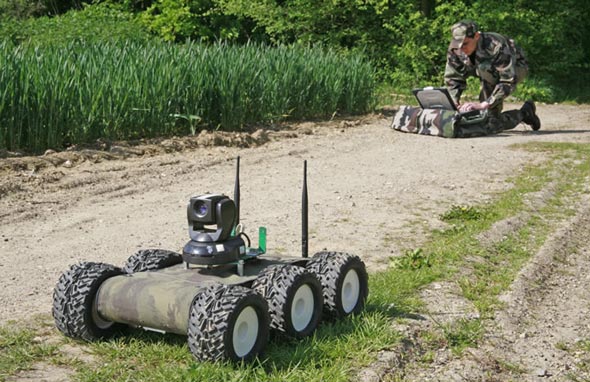The Light Dragoons Lead Light Cavalry Charge
(Source: British Army; issued March 03, 2015)
The punch packed by The Light Dragoons, a light cavalry regiment tasked to provide the Army’s eyes and ears on the battlefield, has been tested.
Exercise WESSEX STORM has seen the unit carrying out live fire training on the rain-lashed STANTA ranges near Thetford, close to their base at Swanton Morley in Norfolk. Deploying on Jackal 2 and Coyote armoured vehicles, the soldiers are training alongside 3rd Regiment Royal Horse Artillery, 21 Engineer Regiment and 2nd Battalion The Royal Gurkha Rifles.
As well as bringing to bear the firepower of their vehicles’ Grenade Machine Guns, Heavy Machine Guns and General Purpose Machine Guns, the Light Dragoons have worked with fire support from Apache attack helicopters, 3 RHA’s 105mm Light Guns and the Gurkha’s 81mm mortars.
The 400-strong battlegroup will now move to Salisbury Plain for a two-week-long simulated mission against an enemy force. The overall aim is to test the Light Dragoons’ progress in developing their new role as light cavalry. As part of the Army 2020 reforms, the unit has swapped CVRT Scimitar armoured fighting vehicles for Jackals and Coyotes and boosted its skills as dismounted infantry.
Working within the Adaptable Force, light cavalry provide highly mobile reconnaissance troops tasked to find battle winning information and exploit opportunities to engage the enemy, as well as work with and train foreign armies.
The Light Dragoons’ Commanding Officer Lieutenant Colonel James Senior said: “Exercise WESSEX STORM represents a superb opportunity for The Light Dragoons to operate alongside our attached arms in a challenging exercise. It is the first time the Jackal has been used in a light cavalry role and we have been working very hard in readiness for the exercise. I am absolutely sure we will come away with an enhanced understanding of how the light cavalry capability has developed.”
The Light Dragoons, known as ‘England’s Northern Cavalry’, recruits from the North East of England and Yorkshire.
Trooper Craig Griffiths, 24 from Peterlee in Co Durham, is a Coyote driver who has been in the Army for two years. He said: “Jackals and Coyotes are fantastic vehicles, because they can go over virtually any terrain at speed, they’re easy to maintain and pack a heavy punch.
“Every time we come out on exercise we’re learning and getting better at our new role. We started last week with firing from a static vehicle and have worked up towards having the whole squadron of 28 vehicles moving and firing together. We’ve done everything by day and then at night, with darkness adding an extra complication.”
HMG gunner Lance Corporal Luke Peacock, 26 from Doncaster, said: “Reconnaissance has always been our business and becoming light cavalry is just about doing it in a different way. We’ve got new vehicles, changed our tactics to suit them and worked on our infantry skills.
“This has been good training that’s tested us and the vehicles. I’m part of B Squadron’s HQ troop, so while the main force goes forward to scout or attack an objective we hang back to provide co-ordination and a reserve.”
LCpl Peacock, who has been in the Army for four years, deployed to Afghanistan in 2012 when The Light Dragoons provided the Brigade Reconnaissance Force for Op HERRICK 16.
-ends-




